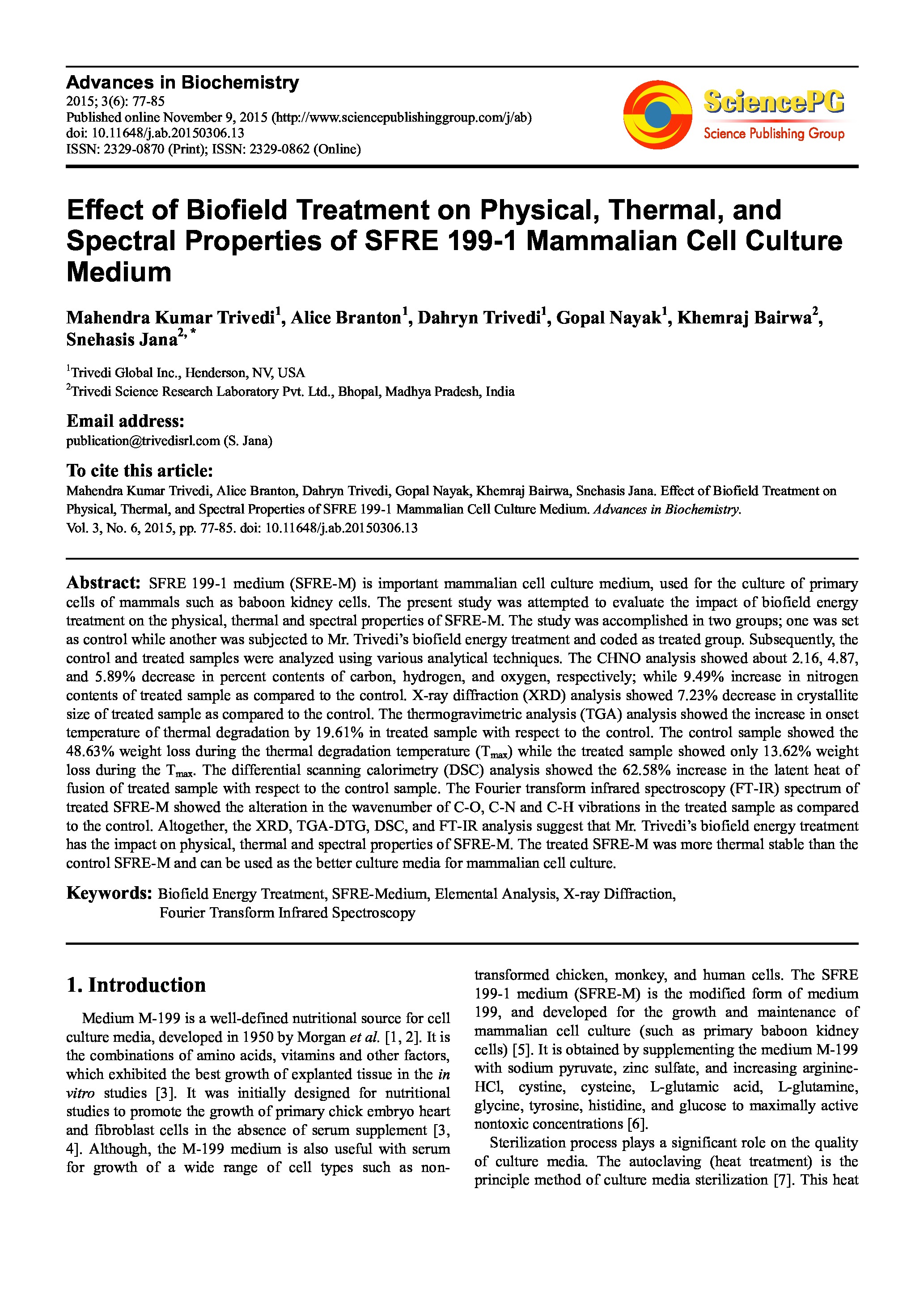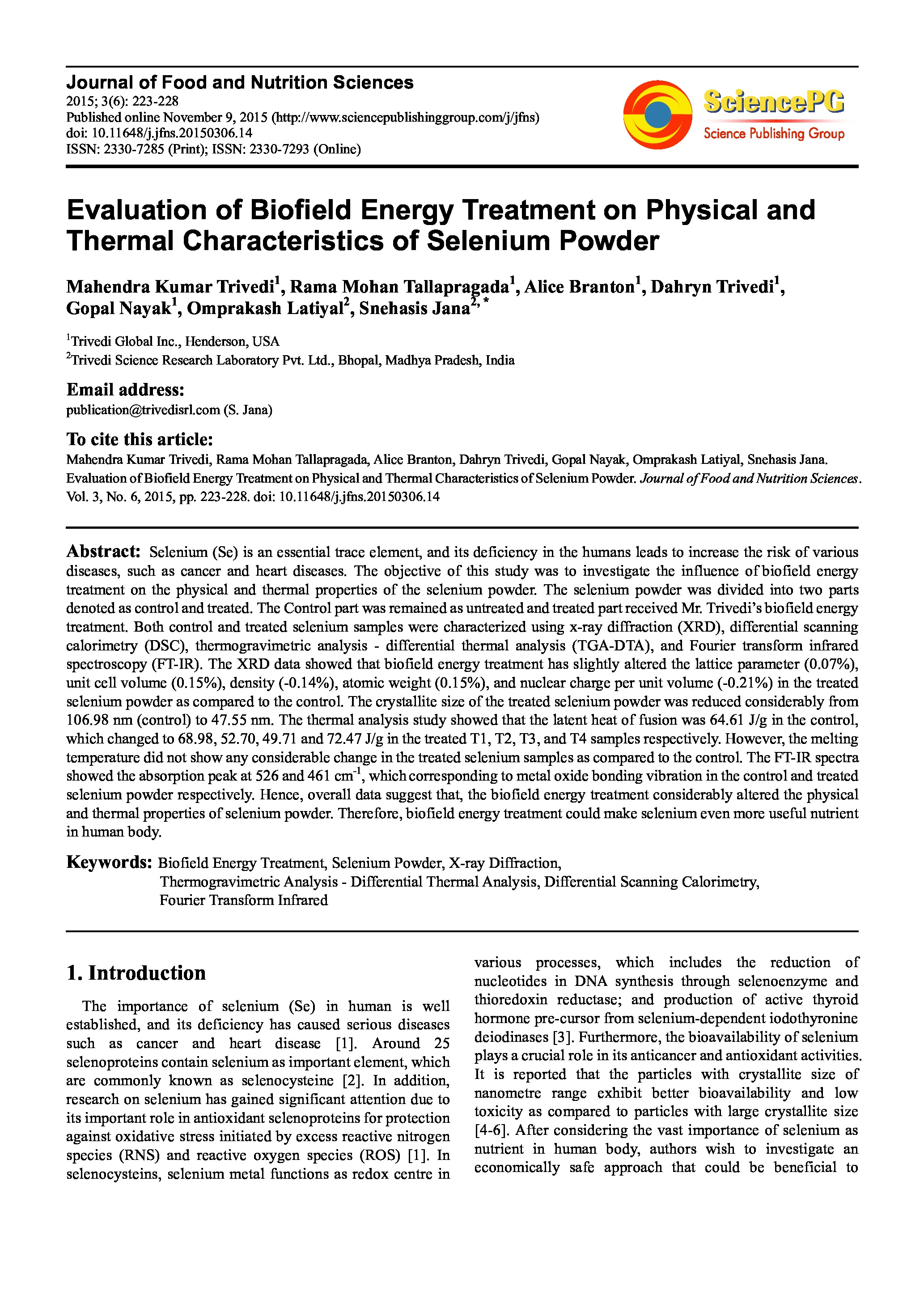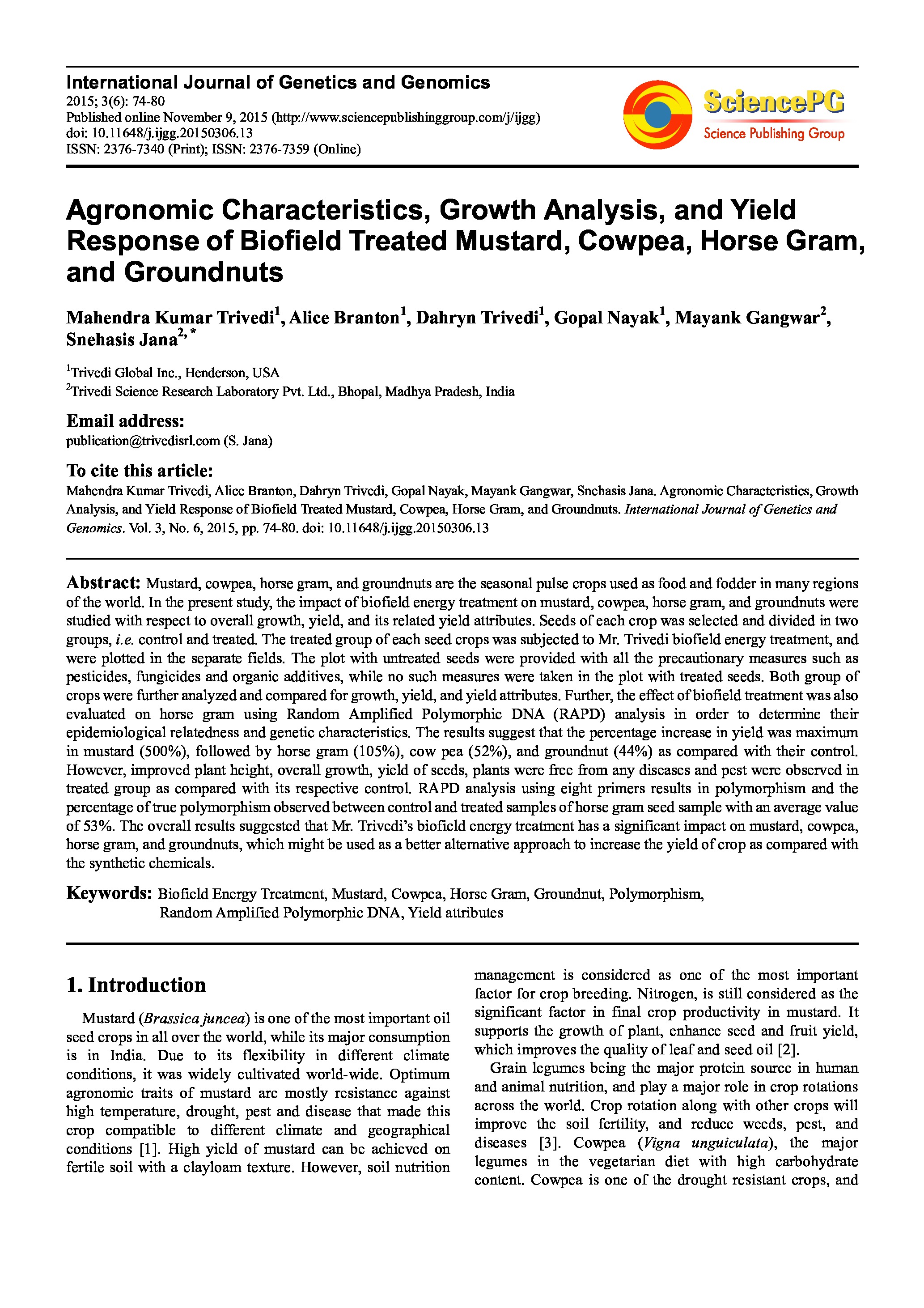Agronomic Characteristics, Growth Analysis, and Yield Response of Biofield Treated Mustard, Cowpea, Horse Gram, and Groundnuts
Natural Sciences (Biology)
541 views
Date of upload:
22.12.2016
Co-author:
Mahendra Kumar Trivedi, Alice Branton, Dahryn Trivedi, Mayank Gangwar, Snehasis Jana
Abstract:
Mustard, cowpea, horse gram, and groundnuts are the seasonal pulse crops used as food and fodder in many regions of the world. In the present study, the impact of biofield energy treatment on mustard, cowpea, horse gram, and groundnuts were studied with respect to overall growth, yield, and its related yield attributes. Seeds of each crop was selected and divided in two groups, i.e. control and treated. The treated group of each seed crops was subjected to Mr. Trivedi biofield energy treatment, and were plotted in the separate fields. The plot with untreated seeds were provided with all the precautionary measures such as pesticides, fungicides and organic additives, while no such measures were taken in the plot with treated seeds. Both group of crops were further analyzed and compared for growth, yield, and yield attributes. Further, the effect of biofield treatment was also evaluated on horse gram using Random Amplified Polymorphic DNA (RAPD) analysis in order to determine their epidemiological relatedness and genetic characteristics. The results suggest that the percentage increase in yield was maximum in mustard (500%), followed by horse gram (105%), cow pea (52%), and groundnut (44%) as compared with their control. However, improved plant height, overall growth, yield of seeds, plants were free from any diseases and pest were observed in treated group as compared with its respective control. RAPD analysis using eight primers results in polymorphism and the percentage of true polymorphism observed between control and treated samples of horse gram seed sample with an average value of 53%. The overall results suggested that Mr. Trivedi’s biofield energy treatment has a significant impact on mustard, cowpea, horse gram, and groundnuts, which might be used as a better alternative approach to increase the yield of crop as compared with the synthetic chemicals.




